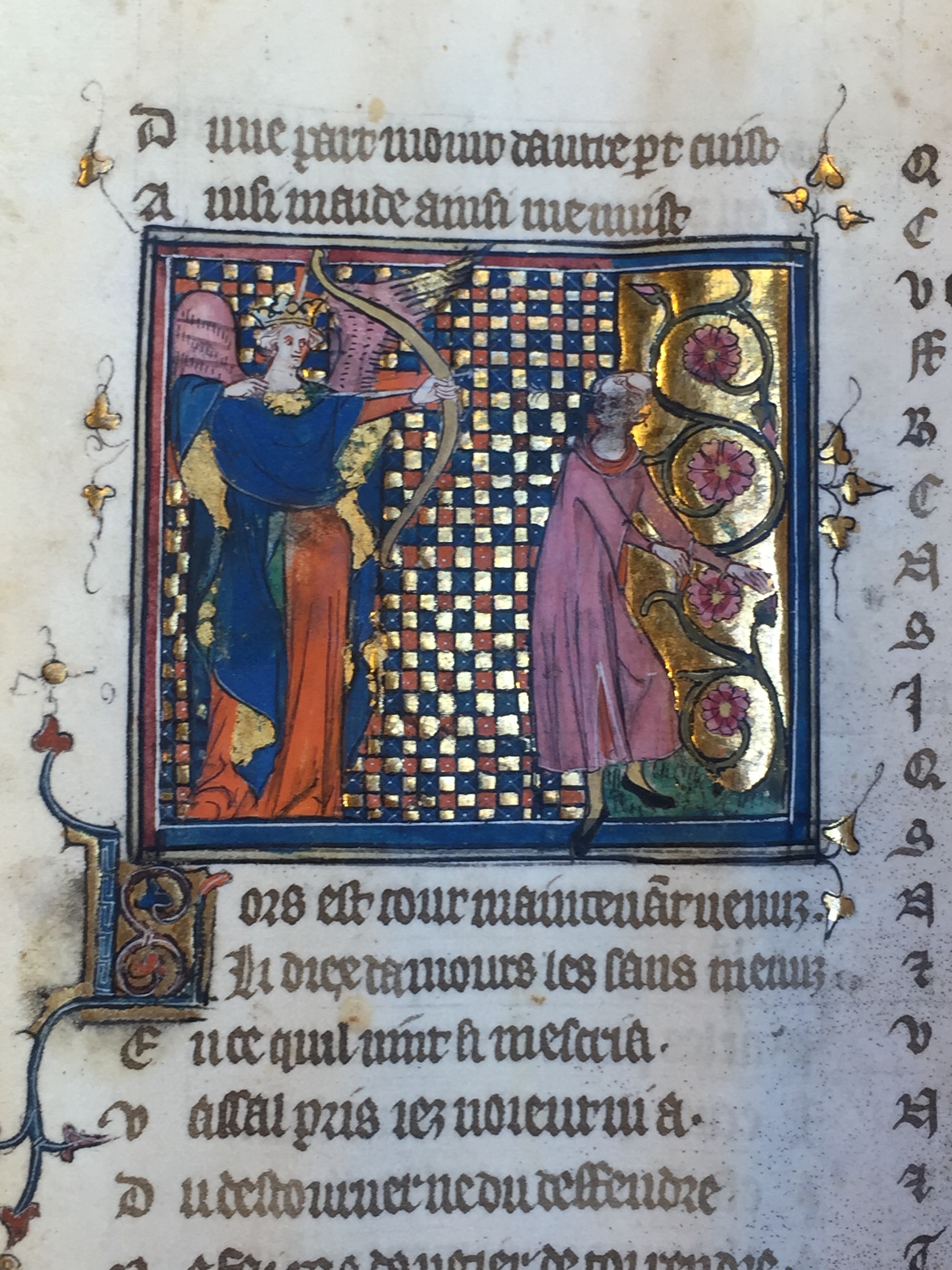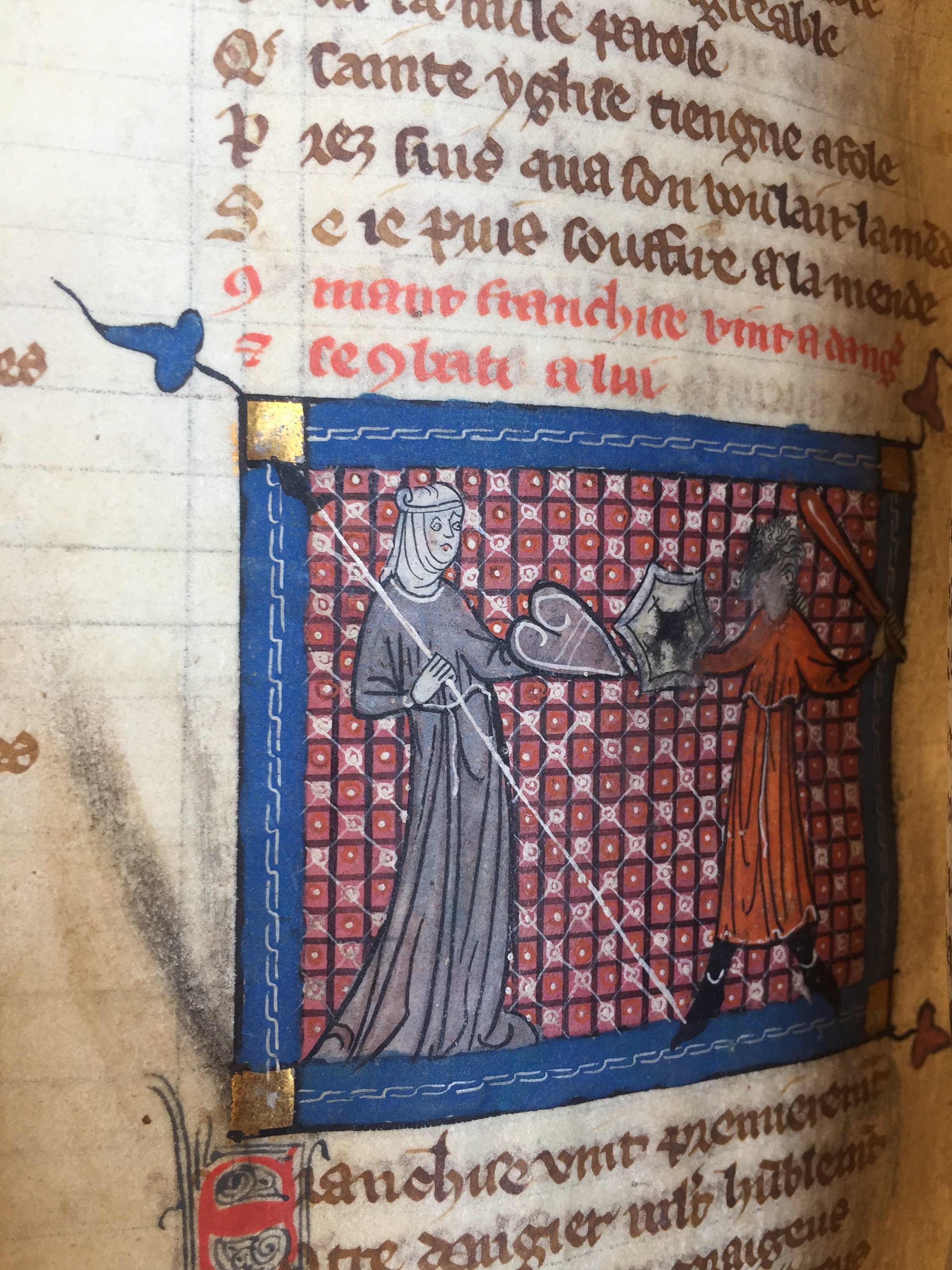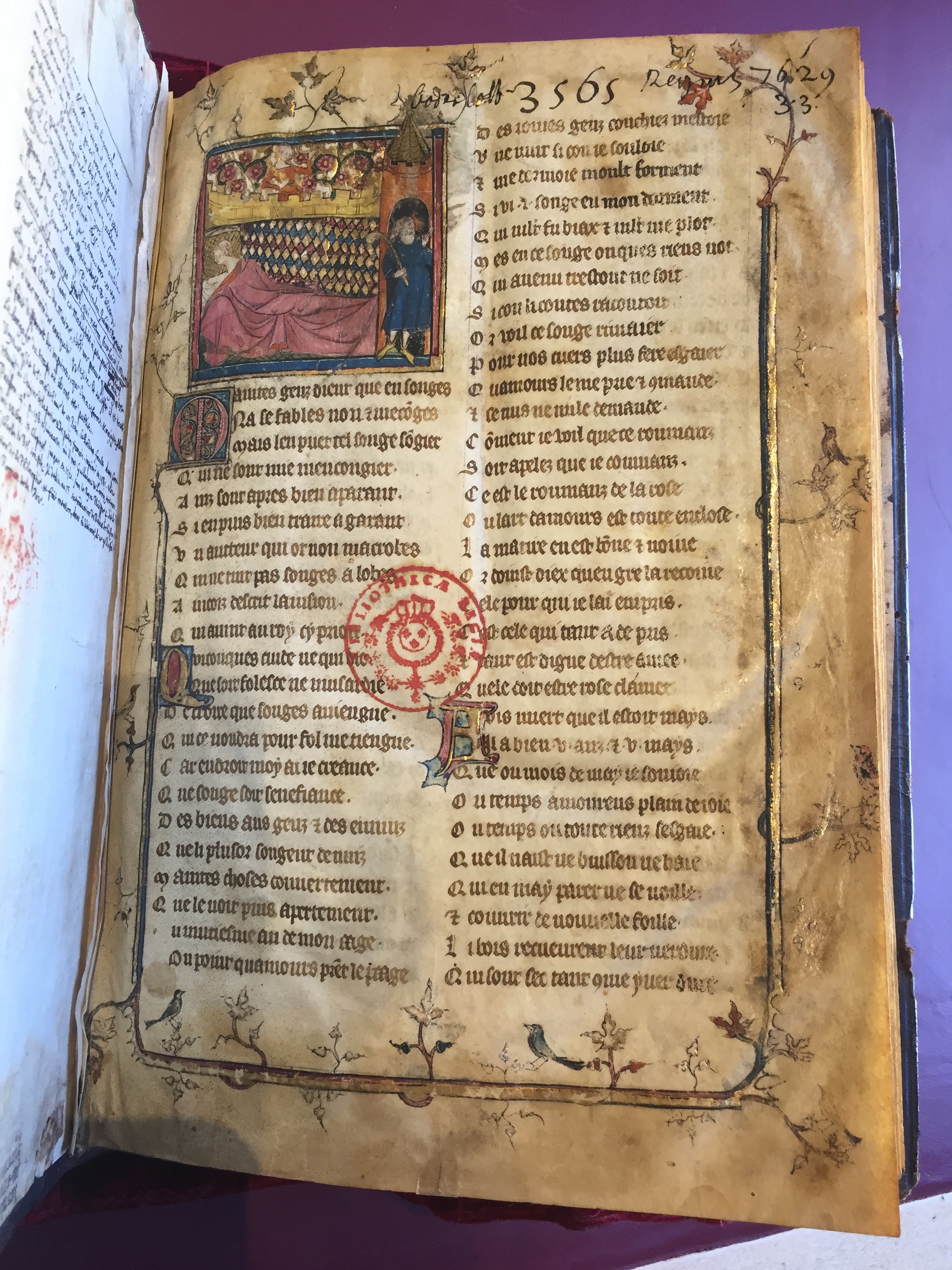Zoe Coyle
Grant awarded Fall 2017
The Kossak grant enabled me to visit the Biblothèque nationale de France (BnF) in Paris and conduct research that proved essential to my master’s thesis, “Through the Eye and Into My Heart: Scenes of Embrace in MS M.245 and the Tactile Responses They Provoked.” Centered on an illuminated Romance of the Rose in the collection of the Morgan Library, New York, I wanted to contextualize this particular manuscript within the broader canon of similar works. Over 300 manuscripts are extant of this popular late medieval poem—most of them illustrated—and nearly a third of them are housed at the BnF.
Spending a week over spring break 2018 in the library’s reading room, I consulted over twenty illuminated manuscripts firsthand. Examining these diminutive, delicate objects in person facilitated observations about their materiality, the relation between image and text, and the corporeal interaction between book and beholder. In addition to charting commonalities and patterns that emerged across the works, I became attuned to the idiosyncrasies of each one. Going into the project, one of my principle concerns was touch. I was curious how a story about desire for physical intimacy (the poem’s protagonist spends the entire narrative in pursuit of plucking a superlative rose in the God of Love’s garden) might resonate with the painted representations on the manuscript page. Not only did I notice that moments of embrace as described in the text were often singled out for illustration, but that the miniatures themselves showed signs of repeated touch by their readers.
These blurs and smudges of paint evidence a distinctly physical experience of reading; previously this sort of tactile engagement has been discussed in scholarship pertaining to medieval religious devotion or iconoclasm. The observations I was able to compile during my visit to the BnF allowed me to make a case for this sort of practice carrying over into a secular realm, where romance manuscripts were also spaces of physical and sensorial engagement.
The Kossak generously allowed me to visit the single greatest resource for my field
of study so that I could interact with my research subject in a means that is closest to their
original function: as stories to be read, rather than as images cropped and floating isolated
on a computer screen.



